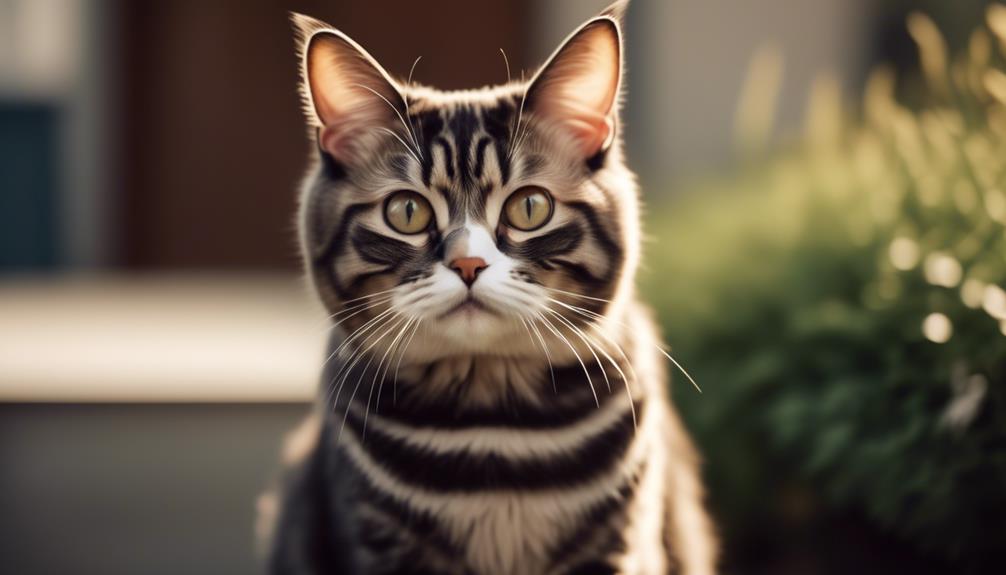
Originating from the Isle of Man, the Manx cat is a fascinating breed that captures the attention of cat lovers worldwide.
With its distinctive lack of tail and charming appearance, this breed has gained popularity for its unique characteristics.
However, there is more to the Manx cat than meets the eye.
From its medium-sized body and dense double coat to its friendly and social temperament, there is a wealth of information about this captivating feline.
So, let’s dive into the world of the Manx cat and uncover the intriguing details that make this breed truly special.
Key Takeaways
- Manx cats are medium-sized, with males weighing 10-12 pounds and females weighing 8-10 pounds.
- They have a dense, double coat with various colors and patterns and require regular grooming to prevent matting.
- Manx cats are known for their friendly, affectionate, and social nature, making them a good choice for families with children and cat-friendly dogs.
- While generally a healthy breed, Manx cats can have genetic mutations that may lead to spinal and neurological issues, so regular veterinary check-ups are essential.
Origin and Size
The Manx cat breed originated from the Isle of Man, a small island located in the Irish Sea.
They’re known for their unique feature of being tailless or having a short tail.
The average size of a Manx cat is medium, with males weighing between 10-12 pounds and females weighing between 8-10 pounds.
Despite their compact size, they have a sturdy and muscular build.
Their round head, large round eyes, stout body, short front legs, and long hind legs are distinguishing characteristics of the breed.
See another cat breed profile.
Mekong Bobtail Cat Breed
Coat and Temperament
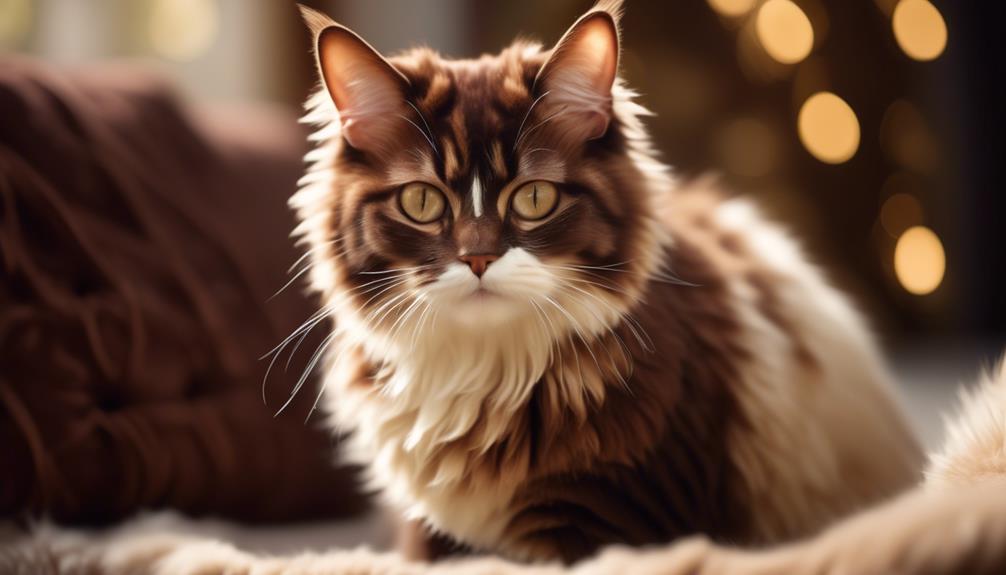
The Manx cat breed is known for its dense, double coat and friendly temperament.
Their coat is thick and plush, providing insulation and protection against the elements.
The Manx comes in two coat lengths: short double coat and longhaired double coat, also known as the Cymric.
The short double coat requires weekly brushing or combing to remove dead hair and distribute skin oil.
On the other hand, the longhaired double coat needs more frequent grooming to prevent matting.
As for their temperament, Manx cats are known to be friendly, affectionate, and social.
They enjoy the company of their family members and are generally good with children and cat-friendly dogs.
Their playful and intelligent nature makes them easy to train, and they often enjoy interactive play and mental stimulation.
Exercise, Training, and Health
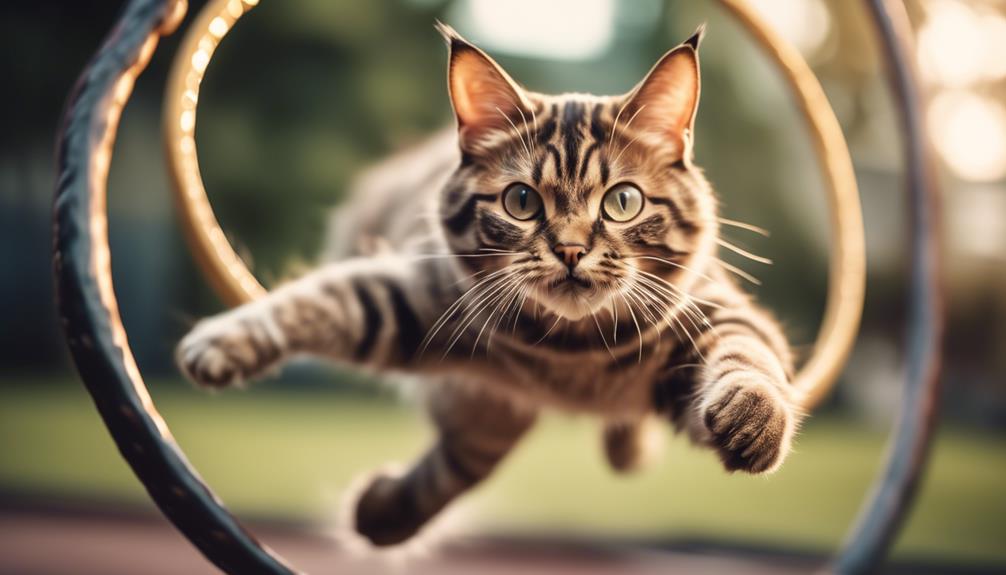
Moving on to exercise, training, and health, Manx cats require regular physical activity and mental stimulation for their overall well-being.
To ensure their health and happiness, here are some important considerations:
- Engaging Playtime: Manx cats benefit from interactive play sessions that stimulate their minds and keep them physically active. Imagine a Manx cat chasing a toy mouse or leaping to catch a feather wand.
- Trainable Nature: These intelligent cats respond well to positive reinforcement training methods. Picture a Manx cat eagerly learning tricks or following commands with enthusiasm.
- Regular Exercise: Regular exercise for Manx cats is essential to maintain physical fitness. Visualize a Manx cat exploring a cat tree, running through a play tunnel, or engaging in active play sessions.
- Grooming Needs: Regular grooming is necessary to prevent matting and keep their coat in good condition. Imagine gently brushing a Manx cat’s dense double coat to remove dead hair and maintain its shine.
Fun Facts and History
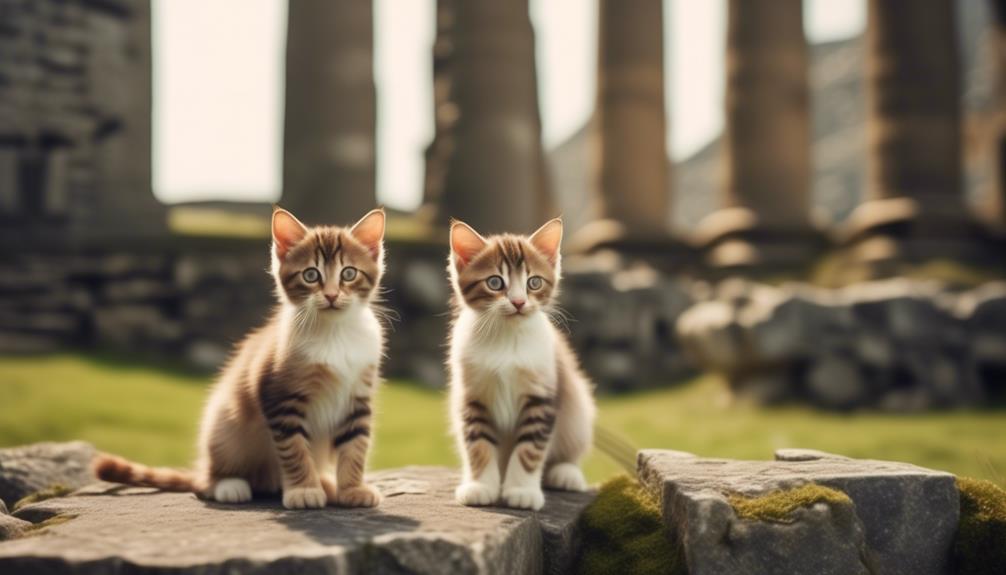
Legend has it that the Manx cat, the national cat of the Isle of Man, has a fascinating history surrounded by myths and tales.
One of the most intriguing aspects of the Manx breed is its origin. It’s believed that the breed originated from a natural mutation that caused the cats to be born without tails or with very short tails.
This unique trait caught the attention of many, and the Manx cat quickly gained popularity.
Over the years, the breed has been featured in various forms of media, such as the film Les Miserables.
A Manx cat named Schickrys became the ship’s cat on the royal yacht Britannia.
Today, the Manx cat continues to captivate people with its distinctive appearance and rich history.
Care and Grooming
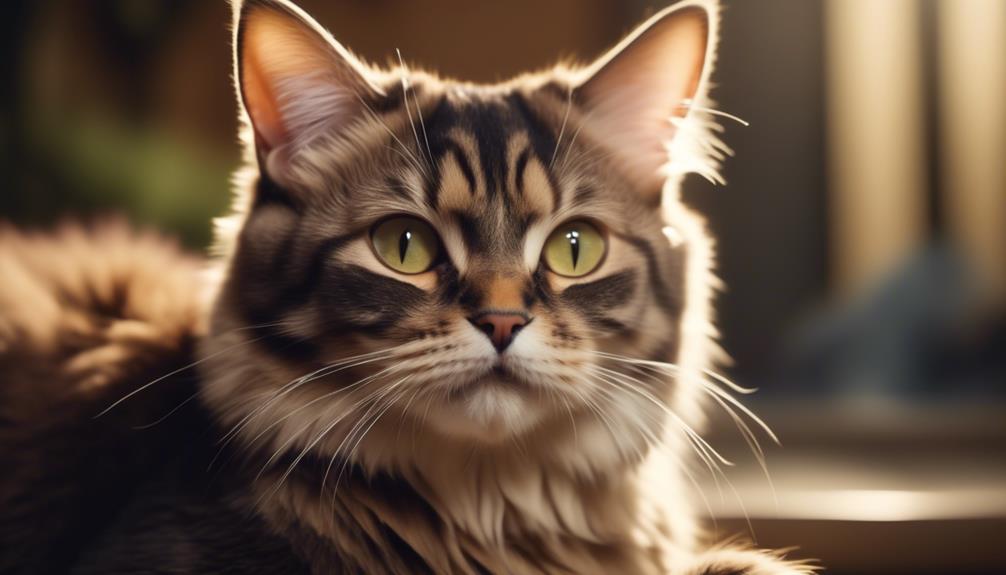
To properly care for a Manx cat, regular grooming is essential. Here are some important aspects of grooming to keep in mind:
- Brushing: Weekly brushing or combing helps remove dead hair and distribute skin oil, keeping the coat healthy and free from matting.
- Hygiene: It’s important to check and clean the rear end of a Manx cat to prevent feces smearing. Regularly brushing their teeth and wiping the corners of their eyes promotes good dental hygiene.
- Ears: Regularly check and clean the ears to prevent wax buildup and potential infections.
- Litter box: Keeping the litter box spotlessly clean is crucial for a Manx cat’s hygiene. Consider keeping them as an indoor-only cat to maintain cleanliness.
Compatibility With Children and Other Pets
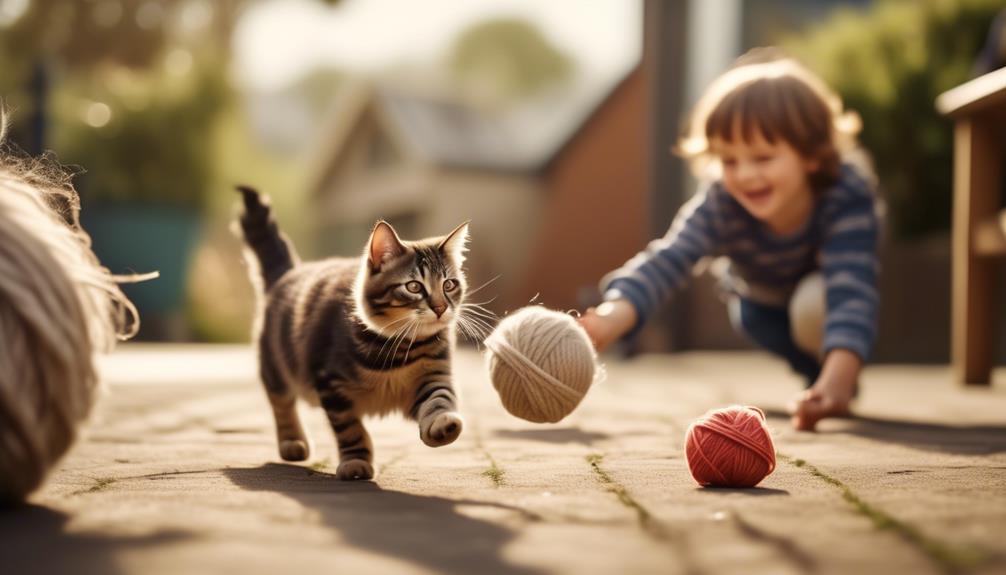
Regular grooming and care are important for a Manx cat, and their compatibility with children and other pets is another aspect to consider.
The Manx is a good choice for families with children and cat-friendly dogs.
They enjoy attention from polite and respectful children and can live peacefully with cats and dogs that respect their authority.
The Manx is an intelligent breed that can play fetch and learn tricks easily.
When introducing new pets, it is important to do so slowly and in controlled circumstances to ensure they get along.
The table below provides statistics about the Manx breed, including their average lifespan, length, weight, and country of origin.
| Statistic | Range |
|---|---|
| Life span | 8 to 14 years |
| Length | 14 to 16 inches |
| Weight | 8 to 12 pounds |
| Country of origin | Isle of Man, UK |
Frequently Asked Questions
Are Manx Cats Prone to Any Specific Health Issues?
Manx cats can be prone to specific health issues due to their breeding practices.
These include genetic mutations that can lead to spinal and neurological problems. Regular veterinary check-ups are essential for their well-being.
Can Manx Cats Be Trained to Use a Litter Box?
Manx cats can be trained to use a litter box.
They are intelligent and trainable, responding well to positive reinforcement methods. Regular grooming and veterinary check-ups are important for their well-being.
Do Manx Cats Require Any Special Dietary Needs?
Manx cats do not require any special dietary needs. They can be fed a balanced cat food that meets their nutritional requirements.
Providing them with proper hydration and monitoring their weight to maintain their overall health is important.
Are Manx Cats Known to Be Good Hunters?
Manx cats are known to have hunting instincts, but their effectiveness as hunters can vary.
Some individuals are skilled hunters, while others may not exhibit strong hunting behaviors.
What Are Some Common Behavioral Traits of Manx Cats?
Manx cats are known for their friendly and social nature.
They are affectionate with their family and can vary in playfulness and vocalization tendencies.
They exhibit various behavioral traits, but overall, they are loving and make great companions.
Conclusion
In conclusion, the Manx cat breed is a unique and charming choice for cat enthusiasts.
Their lack of tail and friendly temperament make them popular with families and households.
While they require specific care and grooming, their overall health is generally good.
With responsible breeding practices and proper care, the Manx cat can continue to be a beloved breed for many years.




